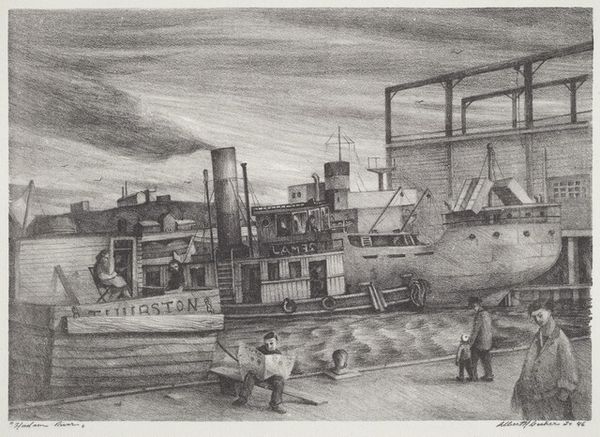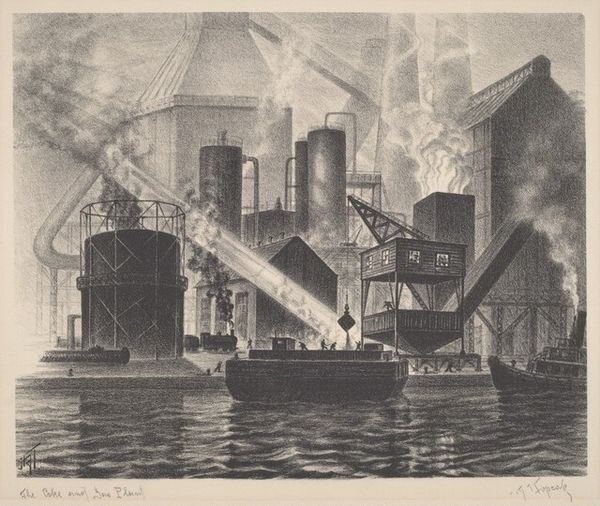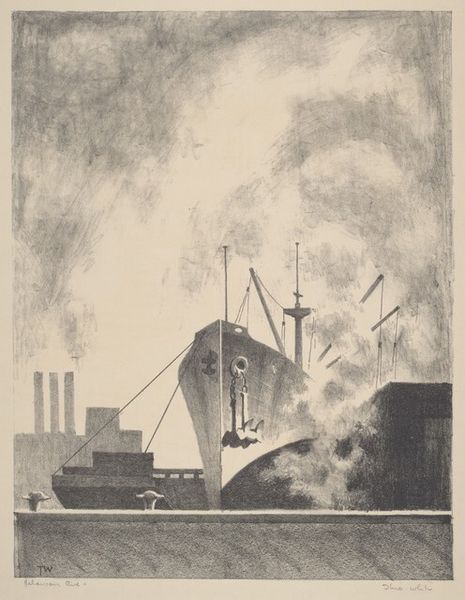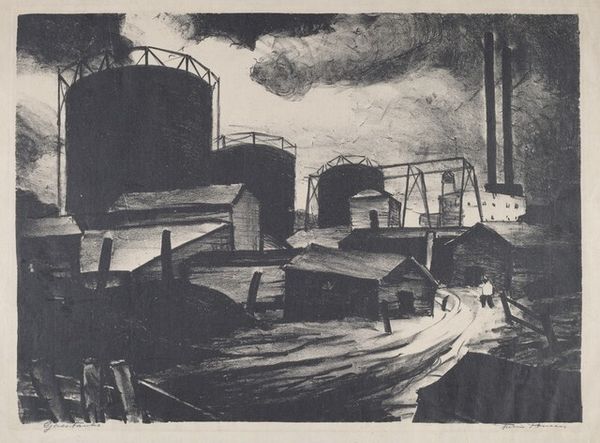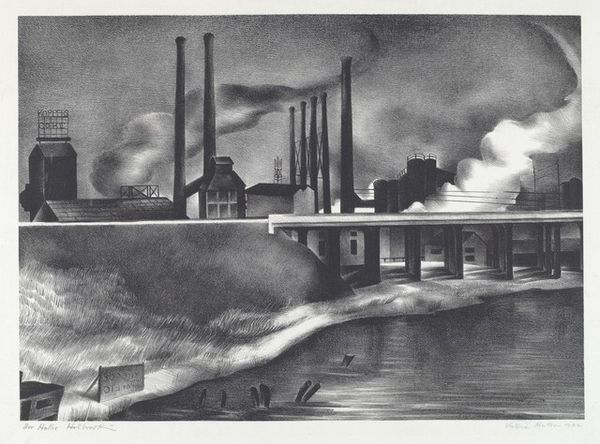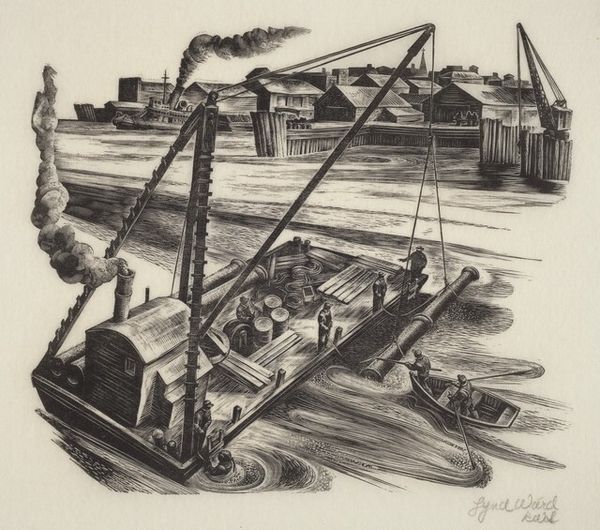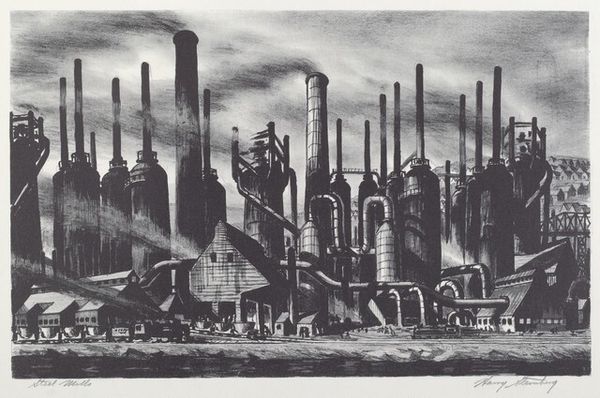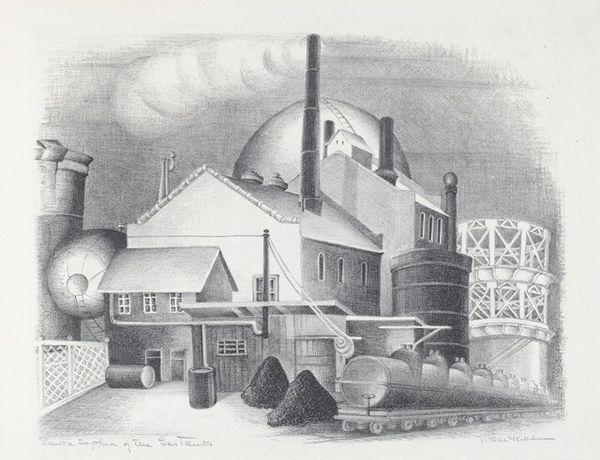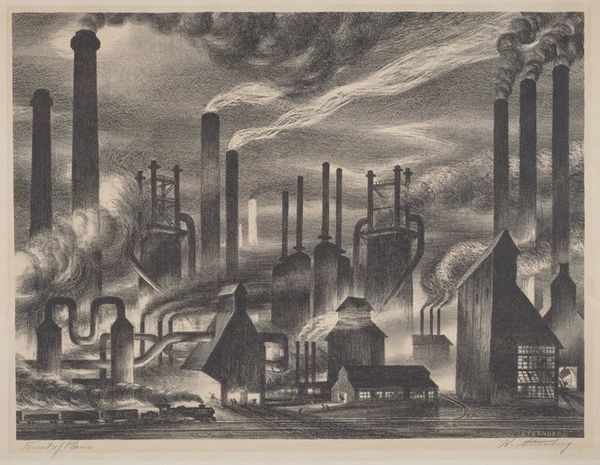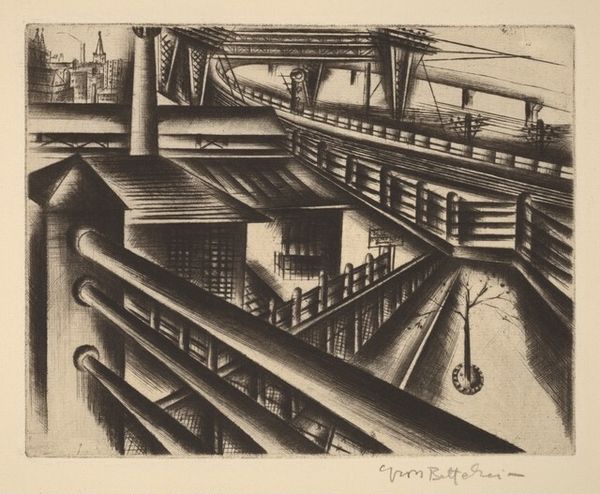
drawing, print, graphite
#
drawing
# print
#
landscape
#
surrealism
#
graphite
#
cityscape
#
modernism
#
realism
Dimensions: image: 290 x 427 mm sheet: 402 x 577 mm
Copyright: National Gallery of Art: CC0 1.0
Editor: So, this is Moses Oley’s "Industrial Shore," dating from the late 30s to early 40s. It's a drawing, a print really, rendered in graphite. It feels both realistic and… well, slightly ominous, wouldn’t you say? What strikes you most about this scene? Curator: Ominous is a good word for it! To me, the entire image vibrates with this hushed tension, doesn't it? The grays are almost a monochrome, lending the factory complex a somewhat foreboding presence. Think of Oley capturing this during the build up to the second world war, an industrialized society shifting into gear for… something big. And what's *that* something, simmering under the surface? Does the single boat floating serenely give you the impression that life, or a kind of freedom is juxtaposed against industrial life and labour? Editor: That’s an interesting point. I hadn’t connected it to the war. The boat now reads like a fragile hope against the… inevitability of industry and war. Curator: Exactly! What I find interesting is Oley using such a detailed style to also leave the work almost undone or unfulfilled. To me this creates a constant questioning of what will happen with these "still lives" of industry, caught just before a catastrophic shift into full war machinery. The realism in the precise lines gives it weight, but that dream-like, unreal quality holds us in limbo between reality and possibility. Editor: It's amazing how much history and emotion can be packed into what at first seems like just a simple cityscape drawing. I definitely see it differently now. Curator: That's the thing about art, isn’t it? A single image, a fleeting moment captured with the weight and burden of historical realities all at play. Art forever a conversation that we are allowed to step in and out of, across the ages.
Comments
No comments
Be the first to comment and join the conversation on the ultimate creative platform.
